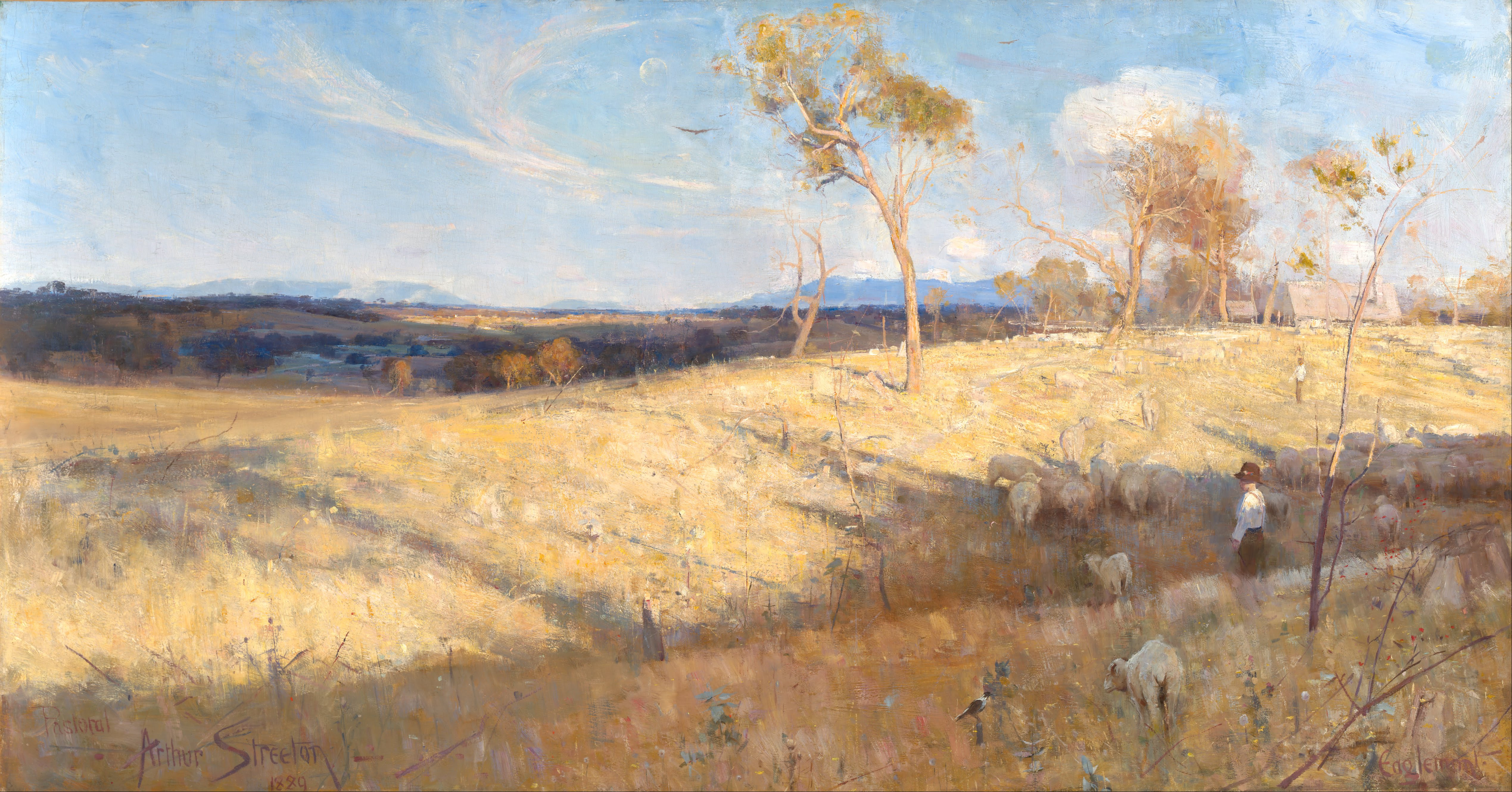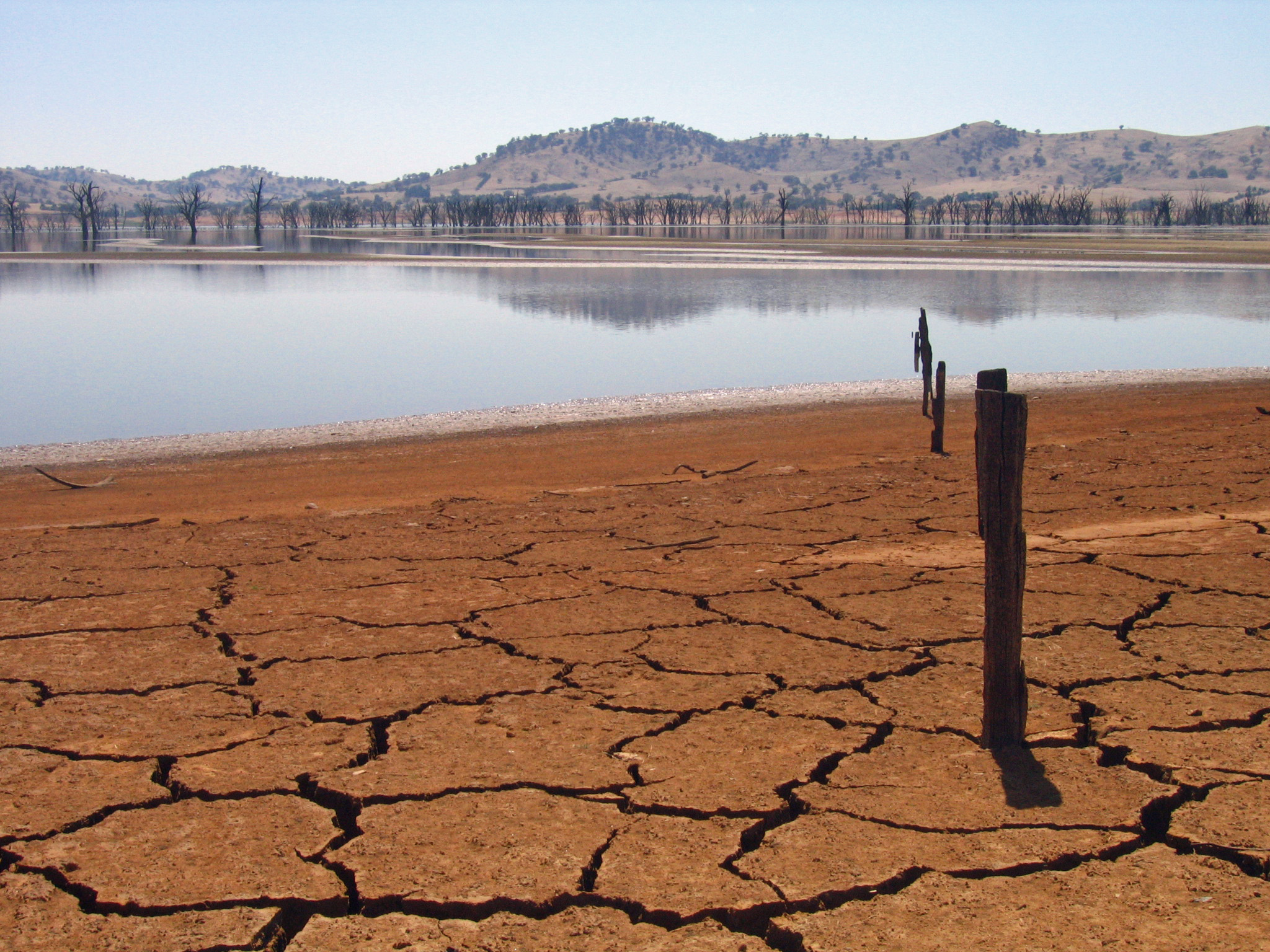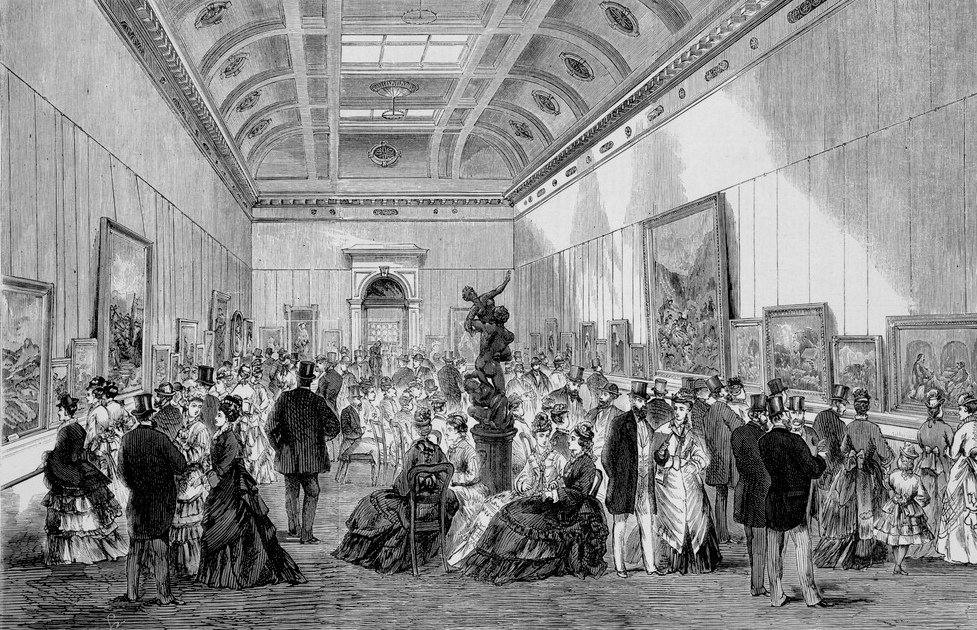|
Arthur Streeton
Sir Arthur Ernest Streeton (8 April 1867 – 1 September 1943) was an Australian landscape painter and a leading member of the Heidelberg School, also known as Australian Impressionism. Early life Streeton was born in Mt Moriac, Victoria, south-west of Geelong, on 8 April 1867 the fourth child of Charles Henry and Mary (née Johnson) Streeton. His family moved to Richmond in 1874. His parents had met on the voyage from England in 1854."Streeton, Sir Arthur Ernest (1867–1943)," ''Australian Dictionary of Biography Online'' In 1882, Streeton commenced art studies with G. F. Folingsby at the National Gallery School.Reid, John B. (1977). ''Australian Artists at War: Compiled ... [...More Info...] [...Related Items...] OR: [Wikipedia] [Google] [Baidu] |
Tom Roberts
Thomas William Roberts (8 March 185614 September 1931) was an English-born Australian artist and a key member of the Heidelberg School art movement, also known as Australian impressionism. After studying in Melbourne, he travelled to Europe in 1881 to further his training, and returned home in 1885, "primed with whatever was the latest in art". A leading proponent of painting ''en plein air'', he joined Frederick McCubbin in founding the Box Hill artists' camp, the first of several ''plein air'' camps frequented by members of the Heidelberg School. He also encouraged other artists to capture the national life of Australia, and while he is best known today for his "national narratives"—among them ''Shearing the Rams'' (1890), '' A break away!'' (1891) and ''Bailed Up'' (1895)—he earned a living as a portraitist, and in 1903 completed the commissioned work '' The Big Picture'', the most famous visual representation of the first Australian Parliament. Life Roberts was born ... [...More Info...] [...Related Items...] OR: [Wikipedia] [Google] [Baidu] |
Heidelberg, Victoria
Heidelberg is a suburb of Melbourne, Victoria, Australia, northeast of Melbourne's central business district, located within the City of Banyule local government area. Heidelberg recorded a population of 7,360 at the 2021 census. Once a large town on Melbourne's outskirts, Heidelberg was absorbed into Melbourne as part of the latter's northward expansion after World War II. Heidelberg once had its own historic central business district including its own municipality in the former City of Heidelberg. Heidelberg lends its name to the Heidelberg School, an impressionist art movement that developed in and around the town in the late 19th-century. History The land at Heidelberg was sold by Crown auction in 1838, making it one of the earliest rural allotments in Australia, as Melbourne was founded only three years earlier. By 1840, ''Warringal'' had been established as a surveyed township, the name referring to an Aboriginal term for '' eagle's nest''. Eventually, ''Warringal'' ... [...More Info...] [...Related Items...] OR: [Wikipedia] [Google] [Baidu] |
Yarra Valley
The Yarra Valley is the region surrounding the Yarra River in Victoria, Australia. The river originates approximately east of the Melbourne central business district and flows towards it and out into Port Phillip Bay. The name Yarra Valley is used in reference to the upper regions surrounding the Yarra River and generally does not encompass the lower regions including the city and suburban areas, where the topography flattens out, or the upper reaches which are in inaccessible bushland. Included in the Yarra Valley is the sub-region of the Upper Yarra Valley which encompasses the towns of the former Shire of Upper Yarra in the catchment area upstream of and including Woori Yallock. The Yarra Valley is a popular day-trip and tourist area, featuring a range of natural features and agricultural produce, as well as the Lilydale to Warburton Rail Trail. The Yarra Valley is host to a thriving wine growing industry. The area's relatively cool climate makes it particularly suited ... [...More Info...] [...Related Items...] OR: [Wikipedia] [Google] [Baidu] |
Eaglemont
Eaglemont is an established suburb of Melbourne, Victoria, Australia, 10 km north-east of Melbourne's Central Business District, located within the City of Banyule local government area. Eaglemont recorded a population of 3,960 at the 2021 census. Formerly known as Mount Eagle, Eaglemont is a picturesque enclave situated between Ivanhoe East and Heidelberg. The heritage-laden garden suburb was designed by Walter Burley Griffin, playing home to many of Australia's most famous artists at the Heidelberg School of Art. Walking distance to first class private schools, the Yarra River, parks, walking trails, shopping centers and a public golf course, the median house prices in Eaglemont remain amongst the highest in Melbourne, with the market for properties notoriously tough to break and few properties up for sale. History Two properties were built in the area in the 1840s; "Leighton" was built by the Bolden brothers, whilst "Hartlands" was built by novelist S. J. Browne. "Ha ... [...More Info...] [...Related Items...] OR: [Wikipedia] [Google] [Baidu] |
David Davies (artist)
David Davies (21 May 1864 – 26 March 1939) was an Australian artist who was associated with the Heidelberg School, the first significant Western art movement in Australia. Biography Born and raised in Ballarat, Victoria, Davies attended art classes at the Ballarat School of Mines and Industries. He subsequently attended the National Gallery of Victoria Art School in Melbourne, studying under Frederick McCubbin and George Folingsby from 1886 to 1890. During this time, he often visited Arthur Streeton, Charles Conder and other ''plein air'' painters at their Mount Eagle "artists' camp". The artists stayed in a farmhouse on the property owned by Charles Davies, the brother of David Davies' future wife. In 1890, Davies submitted his painting ''Under the Burden and Heat of the Day'' to the National Gallery School's Travelling Scholarship competition, but lost. Nonetheless, private collector James Oddie purchased the painting and later sold it to the Art Gallery of Ballarat. Dav ... [...More Info...] [...Related Items...] OR: [Wikipedia] [Google] [Baidu] |
The Argus (Melbourne)
''The Argus'' was an Australian daily morning newspaper in Melbourne from 2 June 1846 to 19 January 1957, and was considered to be the general Australian newspaper of record for this period. Widely known as a conservative newspaper for most of its history, it adopted a left-leaning approach from 1949. ''The Argus''s main competitor was David Syme's more liberal-minded newspaper, ''The Age''. History The newspaper was originally owned by William Kerr, who was also Melbourne's town clerk from 1851–1856 and had been a journalist at the ''Sydney Gazette'' before moving to Melbourne in 1839 to work on John Pascoe Fawkner's newspaper, the '' Port Phillip Patriot''. The first edition was published on 2 June 1846. The paper soon became known for its scurrilous abuse and sarcasm, and by 1853, after he had lost a series of libel lawsuits, Kerr was forced to sell the paper's ownership to avoid financial ruin. The paper was then published by Edward Wilson. By 1855, it had a daily c ... [...More Info...] [...Related Items...] OR: [Wikipedia] [Google] [Baidu] |
Louis Buvelot
Louis Buvelot ( Morges 3 March 1814 – Melbourne 30 May 1888), born Abram-Louis Buvelot, was a Swiss landscape painter who lived 17 years in Brazil and following 5 years back in Switzerland stayed 23 years in Australia, where he influenced the Heidelberg School of painters. Early life Buvelot was born in Morges, Vaud, Switzerland, second son of François Simeon Buvelot, postal official, and his wife Jeanne-Louise ''née'' Heizer, a school teacher. Louis Buvelot (who disliked his first name and never used it) worked under Marc-Louis Arland at Lausanne, and from around 1834 continued his studies at Paris with Camille Flers, a well-known landscape painter of the day. After a few months there he migrated to Bahia, Brazil where he worked on his uncle's coffee plantation. In October 1840 Buvelot moved to Rio de Janeiro and attracted the notice of the emperor Dom Pedro II, who bought some of his pictures and decorated him with the Order of the Rose. In November 1843 Buvelot married Ma ... [...More Info...] [...Related Items...] OR: [Wikipedia] [Google] [Baidu] |
Drought In Australia
Drought in Australia is defined by the Australian Bureau of Meteorology as rainfall over a three-month period being in the lowest decile of what has been recorded for that region in the past. This definition takes into account that drought is a relative term and rainfall deficiencies need to be compared to typical rainfall patterns including seasonal variations. Specifically, drought in Australia is defined in relation to a rainfall deficiency of pastoral leases and is determined by decile analysis applied to a certain area. Note that this definition uses rainfall only because long-term records are widely available across most of Australia. However, it does not take into account other variables that might be important for establishing surface water balance, such as evaporation and condensation. Historical climatic records are now sufficiently reliable to profile climate variability taking into account expectations for regions. Bureau of Meteorology records since the 1860s show t ... [...More Info...] [...Related Items...] OR: [Wikipedia] [Google] [Baidu] |
National Gallery Of Victoria
The National Gallery of Victoria, popularly known as the NGV, is an art museum in Melbourne, Victoria, Australia. Founded in 1861, it is Australia's oldest and most visited art museum. The NGV houses an encyclopedic art collection across two sites: NGV International, located on St Kilda Road in the Melbourne Arts Precinct of Southbank, and the Ian Potter Centre: NGV Australia, located nearby at Federation Square. The NGV International building, designed by Sir Roy Grounds, opened in 1968, and was redeveloped by Mario Bellini before reopening in 2003. It houses the gallery's international art collection and is on the Victorian Heritage Register. The Ian Potter Centre: NGV Australia, designed by Lab Architecture Studio, opened in 2002 and houses the gallery's Australian art collection. A third site, The Fox: NGV Contemporary, is planned to open in 2028, and will be Australia's largest contemporary gallery. History 19th century In 1850, the Port Phillip District of New S ... [...More Info...] [...Related Items...] OR: [Wikipedia] [Google] [Baidu] |
National Gallery Of Australia
The National Gallery of Australia (NGA), formerly the Australian National Gallery, is the national art museum of Australia as well as one of the largest art museums in Australia, holding more than 166,000 works of art. Located in Canberra in the Australian Capital Territory, it was established in 1967 by the Australian Government as a national public art museum. it is under the directorship of Nick Mitzevich. Establishment Prominent Australian artist Tom Roberts had lobbied various Australian prime ministers, starting with the first, Edmund Barton. Prime Minister Andrew Fisher accepted the idea in 1910, and the following year Parliament established a bipartisan committee of six political leaders—the ''Historic Memorials Committee''. The Committee decided that the government should collect portraits of Australian governors-general, parliamentary leaders and the principal "fathers" of federation to be painted by Australian artists. This led to the establishment of what bec ... [...More Info...] [...Related Items...] OR: [Wikipedia] [Google] [Baidu] |
Golden Summer, Eaglemont
''Golden Summer, Eaglemont'' is an 1889 landscape painting by Australian artist Arthur Streeton. Painted ''en plein air'' at the height of a summer drought, it is an idyllic depiction of sunlit, undulating plains that stretch from Streeton's Eaglemont "artists' camp" to the distant blue Dandenong Ranges, outside Melbourne. Naturalistic yet poetic, and a conscious effort by the 21-year-old Streeton to create his grandest work yet, it is a prime example of the artist's distinctive, high-keyed blue and gold palette, what he considered "nature's scheme of colour in Australia". The National Gallery of Australia acquired the painting in 1995 for $3.5 million, then a record price for an Australian painting. It remains one of Streeton's most famous works and is considered a masterpiece of Australian Impressionism. Background Streeton painted the work ''en plein air'' in January 1889 at his Eaglemont "artists' camp", located in the then-rural suburb of Heidelberg on Melbourne's out ... [...More Info...] [...Related Items...] OR: [Wikipedia] [Google] [Baidu] |
Australian Dictionary Of Biography Online
The ''Australian Dictionary of Biography'' (ADB or AuDB) is a national co-operative enterprise founded and maintained by the Australian National University (ANU) to produce authoritative biographical articles on eminent people in Australia's history. Initially published in a series of twelve hard-copy volumes between 1966 and 2005, the dictionary has been published online since 2006 by the National Centre of Biography at ANU, which has also published ''Obituaries Australia'' (OA) since 2010. History The ADB project has been operating since 1957. Staff are located at the National Centre of Biography in the History Department of the Research School of Social Sciences at the Australian National University. Since its inception, 4,000 authors have contributed to the ADB and its published volumes contain 9,800 scholarly articles on 12,000 individuals. 210 of these are of Indigenous Australians, which has been explained by Bill Stanner's "cult of forgetfulness" theory around the co ... [...More Info...] [...Related Items...] OR: [Wikipedia] [Google] [Baidu] |



.jpg)




